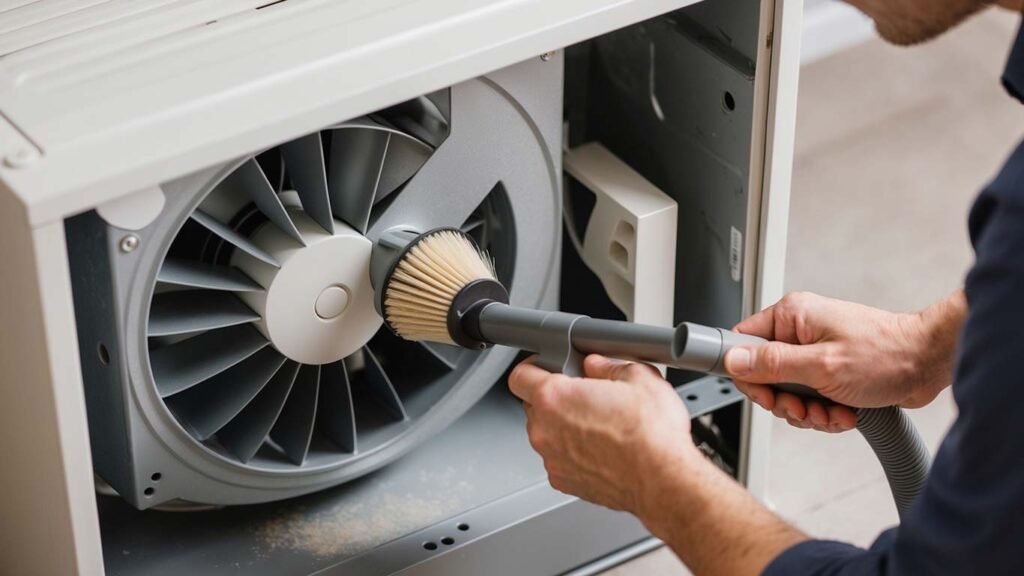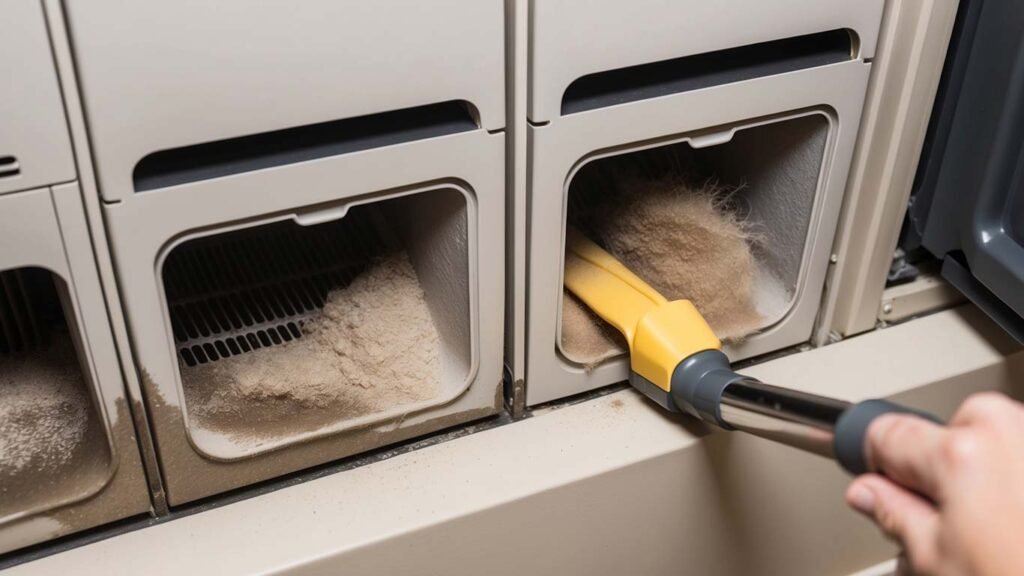How to Clean a Furnace: A Step-by-Step Guide
As the cool desert nights in Las Cruces, New Mexico, start to roll in, it’s time to fire up your furnace for the season. But before you do, ask yourself—has the heating unit been cleaned or inspected?
A neglected furnace could mean poor air quality or even a breakdown when you need it most. Rather than waiting until temperatures drop further, it’s wise to ensure your heating system is ready now.
If you’re unsure where to start cleaning your furnace, we’ve outlined a simple step-by-step guide below. For more complex maintenance, contact Air Control Services at (575) 636-2754 for professional assistance.
Step 1: Turn Off the Power and Gas Supply
Before you begin any cleaning, safety is the top priority. Start by switching off the furnace’s power at the breaker to avoid electrical hazards. Next, turn off the gas supply by locating the valve near the furnace and rotating it to the “off” position. This ensures there are no risks of gas leaks or electrical shocks while you’re working on the furnace.
Step 2: Clean or Replace the Air Filter
The air filter helps maintain airflow and prevents dust from circulating through your home. If your filter is reusable, remove it and clean it with warm water and mild detergent. Let it dry completely before reinstalling.
If the filter is disposable, simply replace it with a new one. A clean filter improves efficiency and helps your furnace operate more smoothly, reducing strain on the system.

Step 3: Clean the Blower Assembly
The blower assembly circulates air through your home. However, it can accumulate dust and debris over time, reducing efficiency.
To clean this component, locate the blower compartment and carefully remove the panel. Use a vacuum with a soft brush attachment to clean the fan blades and surrounding area, ensuring you remove any dust buildup. Be gentle to avoid damaging the delicate parts of the assembly.
Once cleaned, reassemble the blower panel.
Step 4: Vacuum the Furnace Interior
Remove the furnace’s access panel to clean the dust built up inside the heater. Use a vacuum with a hose attachment to carefully clean the interior, paying close attention to areas like the burner assembly and the furnace base. Be cautious around delicate components to avoid damage.
Step 5: Inspect and Clean the Heat Exchanger
The heat exchanger heats the air before it circulates through your home. Over time, it can collect dirt and soot, potentially leading to malfunctions and reduced performance.
After removing the furnace’s access panel, visually inspect the heat exchanger for any cracks or signs of damage. Use a soft brush or cloth to clean away any buildup gently. If you notice significant wear or damage, contacting a professional is best, as a compromised heat exchanger can pose safety risks.
Step 6: Clean the Flame Sensor
The flame sensor ensures your furnace is igniting correctly and safely. Over time, carbon buildup can accumulate on the sensor, causing the furnace to shut down or fail to ignite.
Locate the flame sensor near the burner assembly. Gently remove it and use fine-grit sandpaper or a soft cloth to clean off any residue or buildup. Be careful not to damage the sensor. Once cleaned, reinstall it securely.
Step 7: Clean the Furnace Vents

With continued use, dust and grime can build up in the furnace vents, reducing airflow and overall efficiency. To clean the vents, remove the vent covers and vacuum any visible dust or debris from the vent openings. Use a soft brush attachment to clean deeper into the vents, being careful not to damage any parts.
Once finished, replace the vent covers securely.
Step 8: Reassemble and Test the Furnace
Once all cleaning steps are completed, it’s time to reassemble everything. Start by securely reattaching the access panels and vent covers. Double-check that the blower compartment and any other components are properly reassembled.
After ensuring everything is in place, turn the gas and power back on. Set your thermostat to initiate the furnace, and monitor it for unusual sounds or issues. If anything seems off, consider contacting a professional for further inspection.
When to Call a Professional for Furnace Maintenance
While regular cleaning can help maintain your furnace, some issues require expert attention. If you notice unusual noises, persistent airflow problems, or the system struggles to maintain temperature, it’s time to call a professional. Additionally, if your furnace is over 10 years old or showing signs of wear, a professional inspection can prevent costly breakdowns.
Schedule Your Furnace Inspection with Air Control Services
Schedule a professional inspection with Air Control Services to keep your furnace running efficiently and avoid unexpected breakdowns. Our HVAC technicians can handle maintenance or repair needs to ensure your heating system is ready for the colder months. Contact us today for a thorough inspection and peace of mind.
Frequently Asked Questions
Can I clean my furnace myself?
Yes, you can clean certain parts of your furnace, such as the air filter, blower assembly, and vents, with basic tools such as a vacuum and brush. However, to ensure safe and efficient operation, it’s recommended that you hire a professional for deeper cleaning and inspection of critical components like the heat exchanger and flame sensor.
What parts need to be cleaned in a furnace?
Key parts to clean in a furnace include the air filter, blower assembly, heat exchanger, flame sensor, and vents. Regularly cleaning these components improves efficiency and airflow while reducing the risk of system malfunctions.
How often should a furnace be cleaned?
A furnace should be cleaned at least once a year, ideally before the heating season begins. Regular maintenance ensures efficient operation, reduces the likelihood of breakdowns, and extends the system’s life.
What happens if a furnace is not cleaned?
If a furnace is not cleaned, dust and debris can accumulate, leading to reduced efficiency, poor air quality, and increased energy costs. Over time, neglecting cleaning may cause overheating, system malfunctions, and even safety risks like carbon monoxide leaks.
